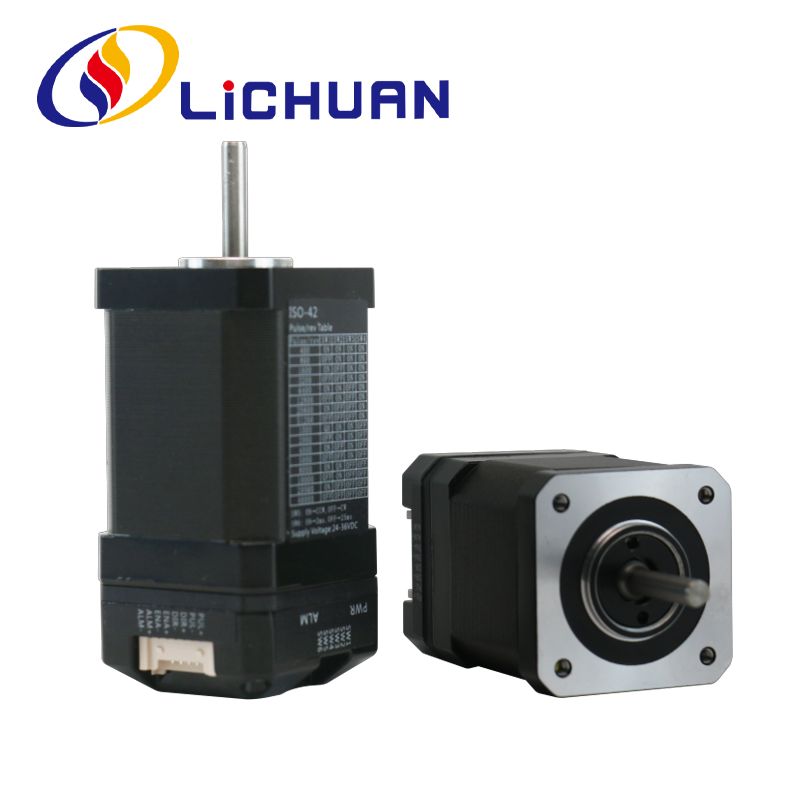Detailed description of Integrated Stepper Motor
2024-06-29
An integrated stepper motor combines a stepper motor and driver electronics into a single compact unit, offering precise control and ease of integration in various automation and motion control applications. Here’s a detailed description of what typically characterizes an integrated stepper motor:
1. Stepper Motor Basics:
- Stepper Motor Type: Utilizes a stepper motor, which is an electromechanical device that converts electrical pulses into discrete mechanical movements (steps).
- Step Angle: Operates with a specific step angle, such as 1.8 degrees per step (common in standard stepper motors), or microstepping options (e.g., 0.9 degrees, 0.45 degrees) for finer resolution.
2. Integration with Driver Electronics:
- Driver Electronics: Integrated within the motor housing, combining the motor windings, rotor, stator, and control electronics into a single unit.
- Microcontroller or DSP: Some models include a microcontroller or digital signal processor (DSP) for precise control of motor movements, acceleration, deceleration, and speed profiles.
3. Construction and Components:
- Motor Components: Contains a rotor with permanent magnets and a stator with coils, arranged in a specific configuration (e.g., bipolar or unipolar).
- Electronics: Includes power electronics for driving the motor coils and control circuitry for interpreting input signals, generating motor pulses, and managing motor operation.
4. Control and Communication Interfaces:
- Input Signals: Receives control signals, typically in the form of pulse and direction commands, from external motion controllers or programmable logic controllers (PLCs).
- Communication Protocols: Some integrated stepper motors support communication protocols such as RS-485, CANopen, Modbus, or Ethernet/IP for networked control and monitoring.
5. Advantages:
- Compact Design: Saves space and reduces wiring complexity compared to separate motor and driver setups.
- Simplified Installation: Eases integration into automation systems, machinery, robotics, and other motion control applications.
- Cost Efficiency: Reduces overall system costs by eliminating the need for external drivers and simplifying wiring and assembly processes.
- Performance: Offers precise positioning, repeatability, and torque characteristics suitable for applications requiring accurate motion control.
6. Applications:
- Automation: Used in automated manufacturing processes such as pick-and-place machines, CNC machines, 3D printers, and robotic systems.
- Medical Equipment: Employed in medical devices for precise positioning and movement control in imaging systems, laboratory equipment, and surgical robots.
- Textile Machinery: Integrated into textile machines for yarn handling, weaving, and fabric tensioning.
- Consumer Electronics: Found in printers, scanners, camera platforms, and other consumer devices requiring controlled motion.
7. Environmental Considerations:
- Temperature Range: Designed to operate within specific temperature ranges suitable for industrial or environmental conditions.
- Protection: Some models include protection features against overcurrent, overtemperature, and voltage spikes to enhance reliability and longevity.
8. Maintenance and Serviceability:
- Durability: Typically designed for long service life with minimal maintenance requirements, depending on operating conditions and usage.
- Service Access: Accessibility to diagnostic interfaces or software tools for troubleshooting and firmware updates, enhancing operational reliability.
An integrated stepper motor combines the functionality of a stepper motor with the driving electronics in a unified package, offering precision, efficiency, and ease of integration for a wide range of industrial and commercial applications requiring controlled motion and positioning.



